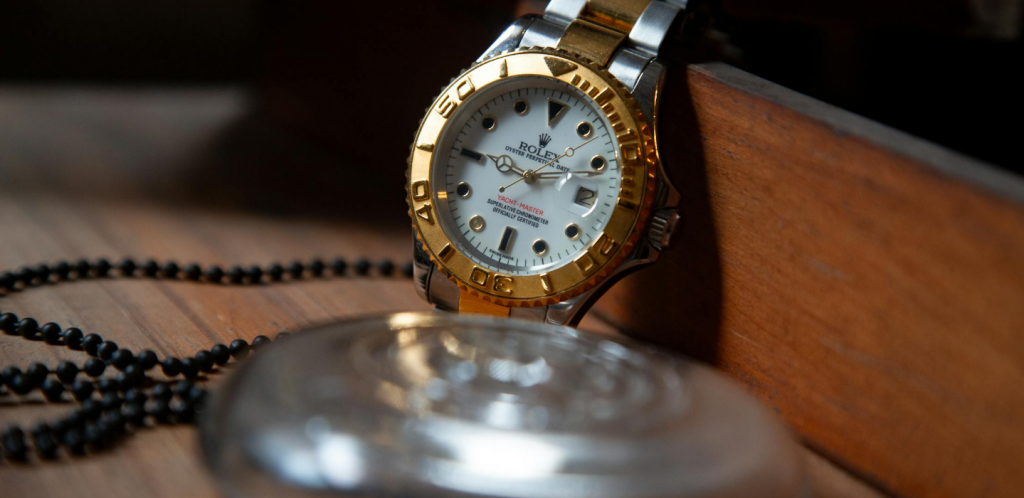
Introduction
Choosing your first luxury watch is an exciting yet daunting journey. Two names frequently surface in this conversation: Rolex Oyster Perpetual and Tudor Black Bay. Both offer exceptional craftsmanship, robust movements, and brand prestige—but how do they stack up when considering resale value and daily wearability? This article dives deep into an analytical comparison, evaluating design, performance, and long-term value.
Brand Heritage and Positioning
Rolex Oyster Perpetual: The Timeless Icon
Rolex has become synonymous with prestige and durability. The Oyster Perpetual, often considered the gateway into the Rolex universe, carries a rich heritage of precision and timeless design. Its simple, classic look makes it suitable for virtually any setting, from boardrooms to casual outings.
Tudor Black Bay: Heritage Meets Modernity
Tudor, Rolex’s sister brand, has evolved from a practical tool watch brand into a collectible modern icon. The Black Bay line balances historical dive-watch cues with contemporary aesthetics, offering bold designs and sturdy performance at a more accessible price.
Design and Aesthetic Comparison
Case and Dial Design
The Oyster Perpetual is known for its clean, minimalist dial, smooth bezel, and refined lines. In contrast, the Black Bay often features a larger case and vintage-inspired bezel, reflecting Tudor’s dive heritage. Both designs are timeless, but the choice depends on whether you prefer understated elegance or sporty presence.
Bracelet and Comfort
Rolex bracelets are famous for robust construction and comfort, featuring the Oystersteel finish and a smooth clasp system. Tudor Black Bay bracelets are solid, sometimes heavier, and provide a slightly more rugged feel. Comfort-wise, Rolex has a slight edge for prolonged wear.
Visual Appeal for Everyday Wear
For daily wear, the Oyster Perpetual’s simplicity makes it versatile with various outfits, while the Black Bay commands more attention, particularly for casual or sports attire. Both watches have high recognizability and aesthetic charm.
Movement and Technical Features
Rolex Oyster Perpetual Movement Overview
Equipped with Rolex’s in-house caliber 3230, the Oyster Perpetual provides ±2 seconds/day accuracy, anti-magnetic features, and a 70-hour power reserve. Its movement is rugged, precise, and nearly maintenance-free.
Tudor Black Bay Movement Overview
Modern Black Bay models feature Tudor’s MT5602 movement, offering similar accuracy, a 70-hour power reserve, and COSC certification. While slightly less prestigious in market perception than Rolex, the MT5602 delivers excellent performance and reliability.
Accuracy, Reliability, and Power Reserve
Both watches excel in daily accuracy, with power reserves sufficient for multi-day wear without winding. Rolex may edge Tudor slightly in long-term service predictability, but Tudor is impressively resilient.
Daily Wearability Assessment
Comfort and Ergonomics
Rolex Oyster Perpetual’s lighter, more ergonomic case sits comfortably on the wrist for extended periods. Tudor Black Bay is slightly bulkier, favored by those who prefer a substantial feel.
Versatility with Outfits
Oyster Perpetual blends seamlessly with formal and casual attire. Black Bay is versatile but leans sportier, making it ideal for weekend wear and adventurous outings.
Resistance to Scratches and Wear
Both watches use high-grade stainless steel, though Oystersteel offers slightly better scratch resistance. Tudor’s finishing is rugged but shows minor signs of wear more visibly over time.
Resale Value Considerations
Rolex: Strong Market Demand and Appreciation
Rolex maintains exceptional resale value, often exceeding retail in high-demand models. The Oyster Perpetual is a safe entry-level investment for long-term appreciation.
Tudor: Solid Resale but Moderate Market Movement
Tudor’s resale market is stable but less lucrative. While collectible, Tudor Black Bay generally trades closer to original retail, offering lower investment potential compared to Rolex.
Durability and Maintenance
Case Materials and Finishing
Both watches feature stainless steel cases, but Rolex’s finishing and corrosion resistance are industry-leading. Tudor’s Black Bay is robust but leans on its sporty, tool-watch heritage rather than luxury finishing.
Water Resistance and Shock Protection
Both are water-resistant to 100–200 meters depending on the model. Shock protection is robust in both, suitable for daily wear, sports, and casual water activities.
Service Intervals and Costs
Rolex service costs are higher but less frequent due to proven movement longevity. Tudor service is more affordable, with slightly shorter recommended intervals.
Pricing and Accessibility
Rolex Entry-Level Pricing Trends
Rolex Oyster Perpetual models generally start around $6,000–$7,000, with waiting lists in many markets. Accessibility is limited, adding to its desirability and investment appeal.
Tudor Pricing Relative to Rolex
Tudor Black Bay prices range $3,500–$4,500, offering a more attainable entry point for luxury watch enthusiasts. While less exclusive, it represents excellent value for its performance and quality.
Collectibility and Investment Potential
Rolex as a Long-Term Asset
Oyster Perpetual watches often appreciate in value, especially limited editions or unique dial colors. Collectors view them as both wearable and investable.
Tudor as a Collector’s Watch
Black Bay models are increasingly collectible, particularly vintage-style releases. While investment gains are slower, they offer tangible style and historical appeal.
Style Versatility in Daily Life
Formal and Casual Settings
Rolex excels in formal occasions without sacrificing casual versatility. Tudor’s bolder aesthetic leans sportier but can still pair with semi-formal attire.
Suitability for Travel and Sports
Both watches are durable for travel and light water activities. Black Bay’s dive-watch origins make it slightly more adventurous-ready, while Oyster Perpetual is classic yet sturdy.
Comparative Wear Test: 6-Month Review
Rolex Daily Experience
After six months, Oyster Perpetual remains flawless. Scratch resistance is high, comfort remains excellent, and versatility proves unmatched. Minimal maintenance needed.
Tudor Daily Experience
Black Bay performs admirably with robust wear resistance. Minor bracelet stretching and aesthetic patina develop, but durability exceeds expectations.
Pros and Cons Summary
Rolex Strengths and Weaknesses
- Pros: Resale value, versatile style, superior finishing
- Cons: High entry cost, limited availability
Tudor Strengths and Weaknesses
- Pros: Strong performance, more accessible, vintage appeal
- Cons: Moderate resale value, bulkier for some wrists
Final Verdict: Which Entry-Level Luxury Watch Wins?
If resale value and classic versatility are your priority, Rolex Oyster Perpetual is the ultimate entry-level luxury choice. For accessibility, rugged charm, and heritage style, Tudor Black Bay shines. Your lifestyle and investment goals will guide the decision.
Conclusion
Both Rolex and Tudor offer remarkable entry-level luxury watches. Oyster Perpetual dominates in prestige, resale value, and everyday wearability, while Black Bay delivers charm, durability, and affordability. Ultimately, either choice provides long-lasting enjoyment, timeless style, and a step into the luxury watch world.

FAQs
Q1: Which watch holds value better over time?
Rolex Oyster Perpetual generally appreciates and maintains high resale value; Tudor Black Bay is stable but less lucrative.
Q2: Are both watches suitable for daily wear?
Yes, both are robust, water-resistant, and comfortable, though Rolex is slightly lighter and more versatile.
Q3: Which is easier to purchase as an entry-level luxury watch?
Tudor Black Bay is more accessible, with shorter waiting times and lower prices.
Q4: Can Tudor Black Bay be a collectible watch?
Absolutely. Vintage-inspired releases and limited editions are increasingly collectible.
Q5: What should first-time luxury buyers prioritize?
Decide between resale/investment potential (Rolex) or affordable heritage and robust wear (Tudor).






